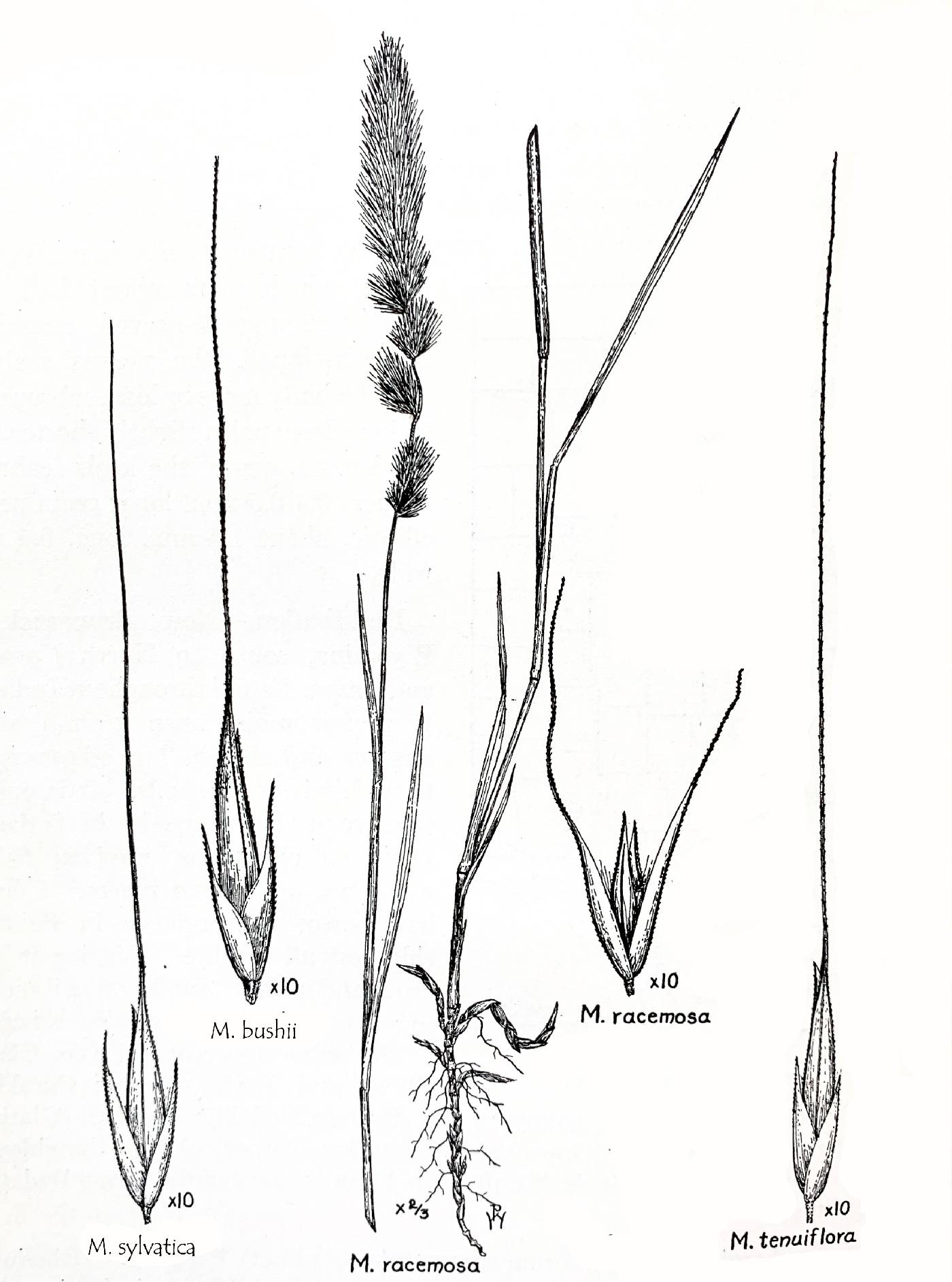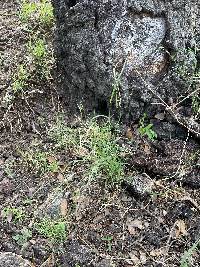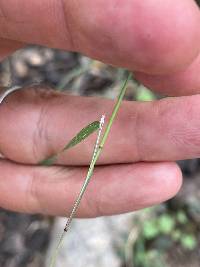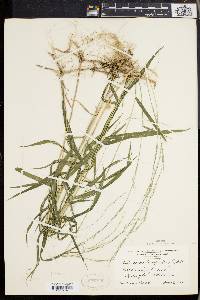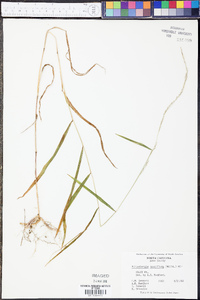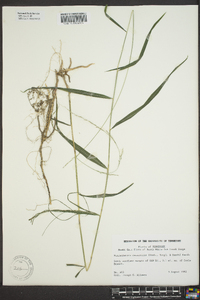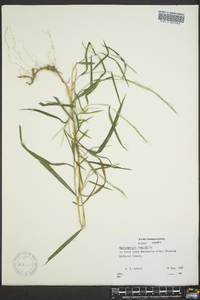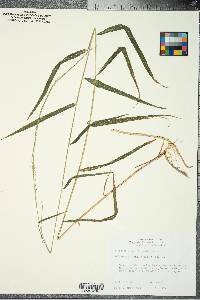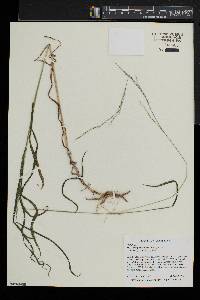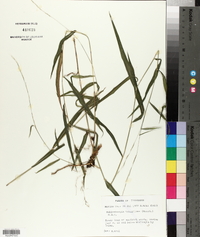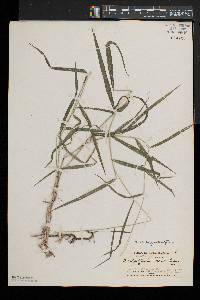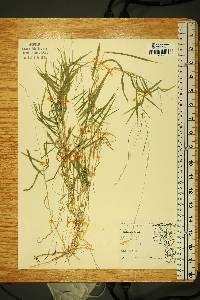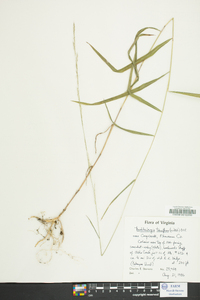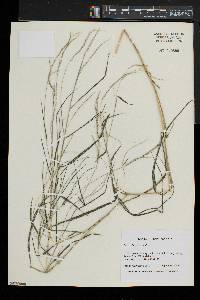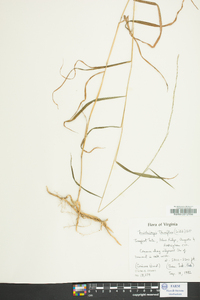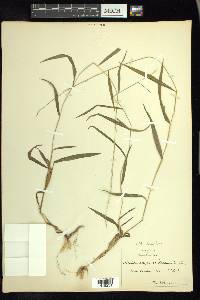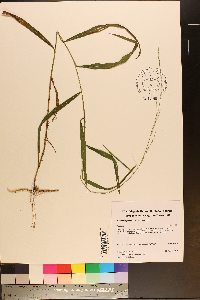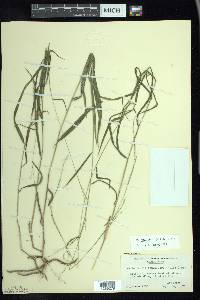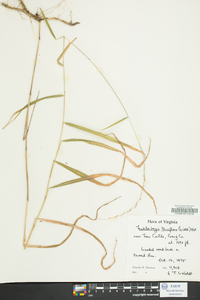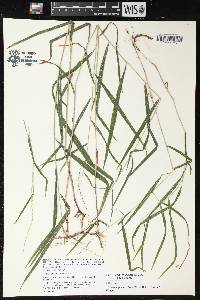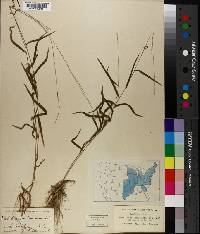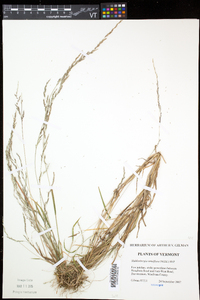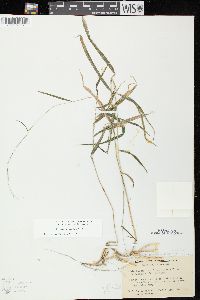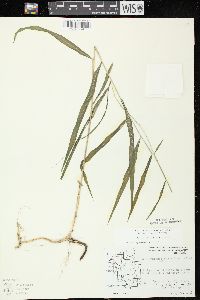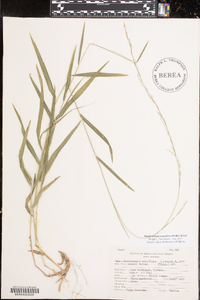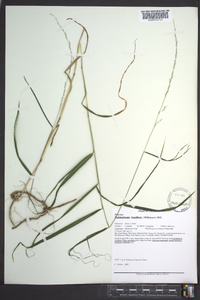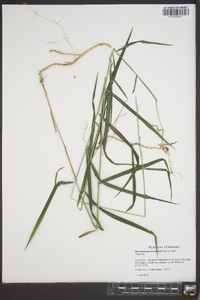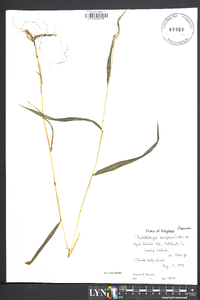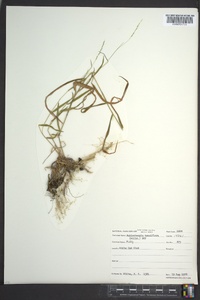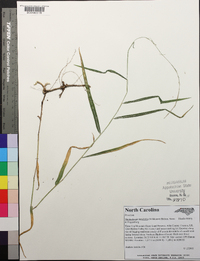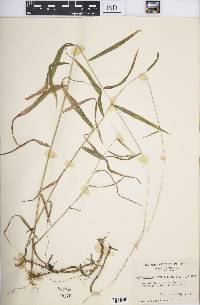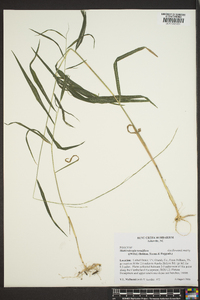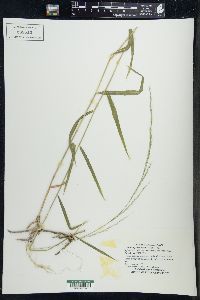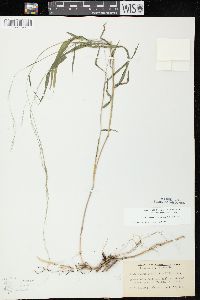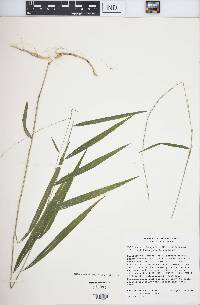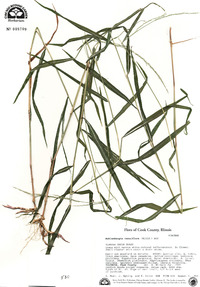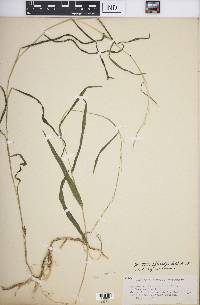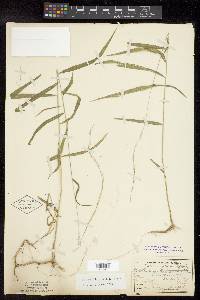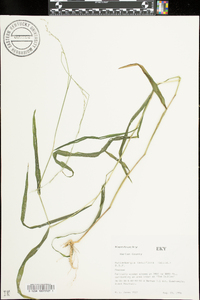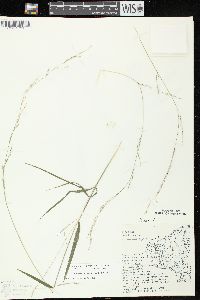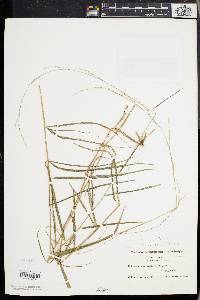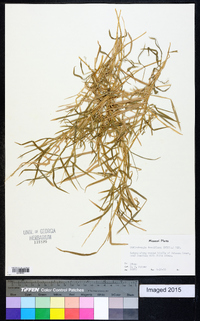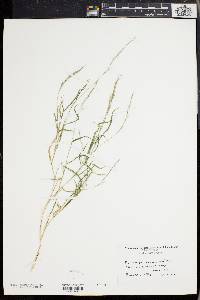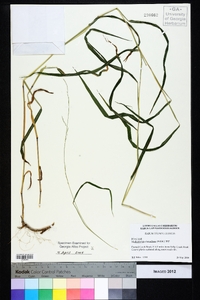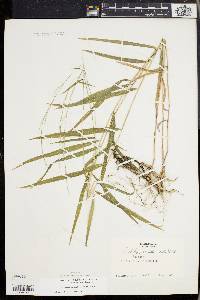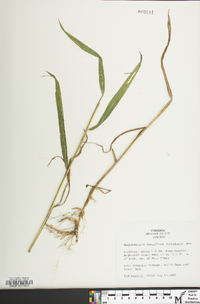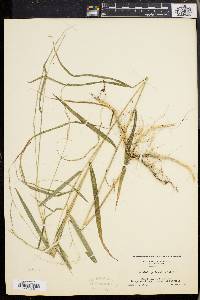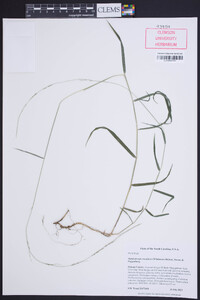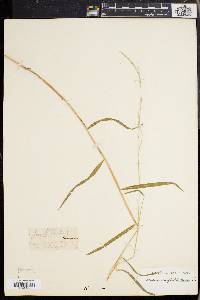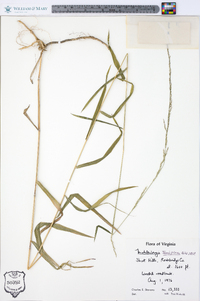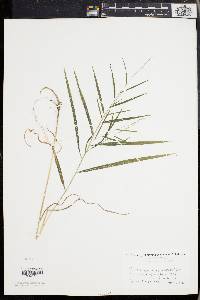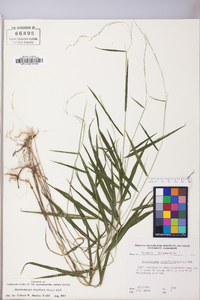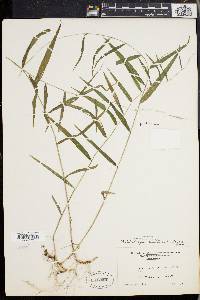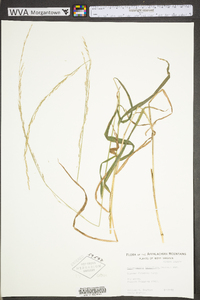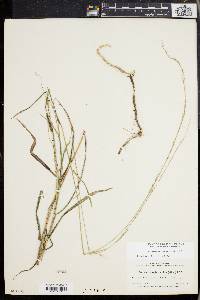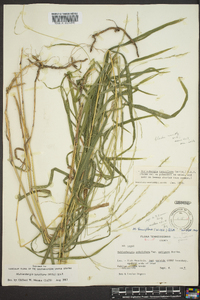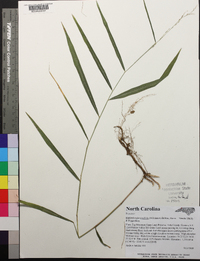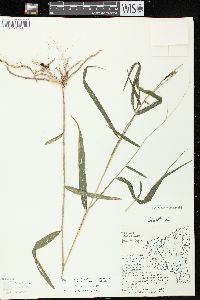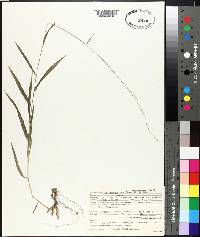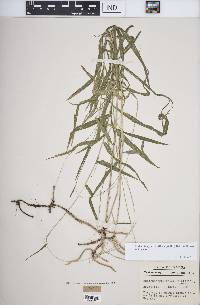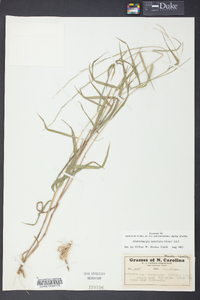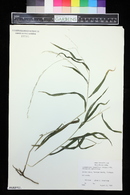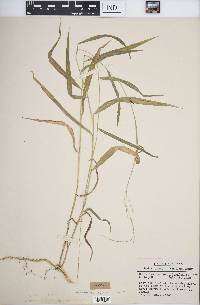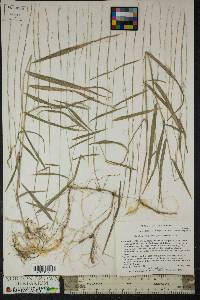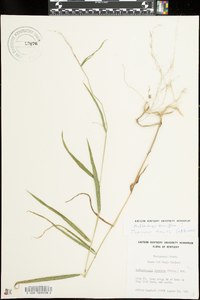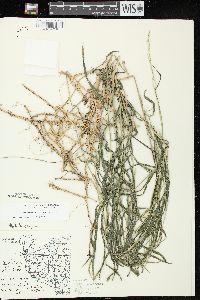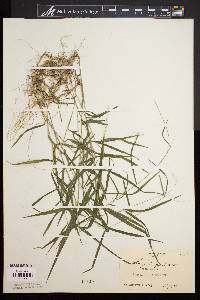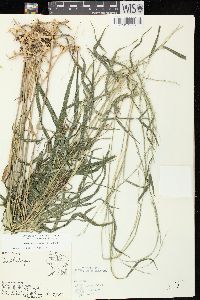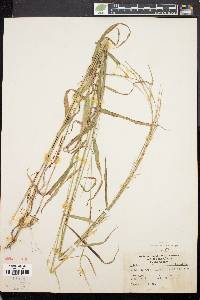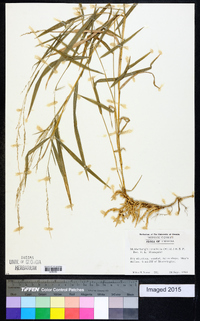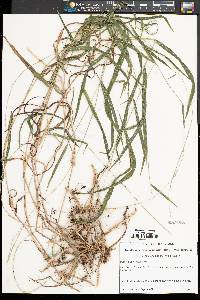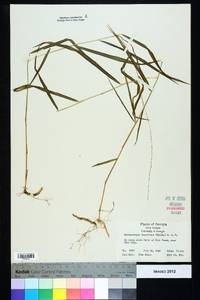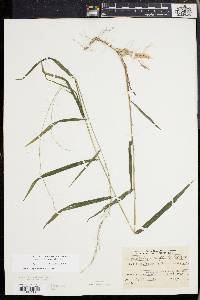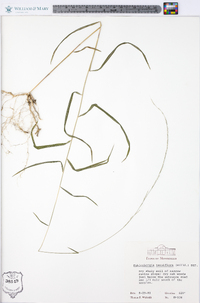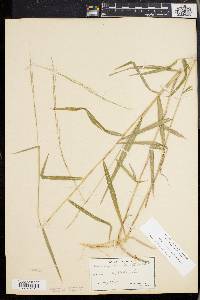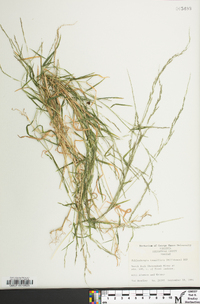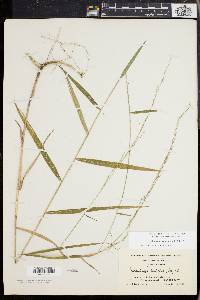
|
|
|
|
Family: Poaceae
Slim-Flower Muhly, more...slimflower muhly, slimflowered muhly
[Apera tenuiflora (Willd.) P. Beauv., moreCinna tenuiflora (Willd.) Link, Muhlenbergia willdenowii , Trichochloa tenuiflora (Willd.) Sweet] |
Plants perennial; rhizomatous, not cespitose. Culms 40-120 cm tall, less than 2 mm thick, erect; internodes mostly pubescent, retrorsely hirsute to strigose below the nodes. Sheaths mostly glabrous, usually pubescent near the base, scabridulous distally; ligules 0.4-1.2 mm, membranous, truncate, ciliolate; blades 6-20 cm long, 4-10(15) mm wide, flat, glabrous and smooth abaxially, occasionally scabridulous adaxially. Panicles usually terminal, 10-33 cm long, 0.2-0.8 cm wide, exserted; branches 1-10 cm, ascending to appressed; pedicels 1-6 mm, strigose. Spikelets 2.6-4.5 mm, overlapping the next spikelet on the branch by 1/4 of its length. Glumes subequal, 1.3-3 mm, shorter than the lemmas, 1-veined (lower glumes rarely 2- or 3-veined), tapering from near the base, bases overlapping, apices scabridulous, acute, unawned or awned, awns to 1 mm; lemmas 2.6-4.5 mm, lanceolate to narrowly lanceolate, usually pubescent on the calluses, lower 1/3 of the midveins, and margins (hairs sometimes restricted to the callus), hairs shorter than 1.2 mm, apices acute or acuminate, usually awned, awns to 12 mm; paleas 2.6-4.5 mm, lanceolate to narrowly lanceolate, shortly pilose on the lower portion, apices acuminate; anthers 1.1-2.2 mm, yellowish. Caryopses 2-2.3 mm, fusiform, brown. 2n = 40. Muhlenbergia tenuiflora grows only in the Flora region, usually being found on sandy or rocky slopes derived from sandstone, chert, or limestone formations, in mixed hardwood and oak-hickory forests, at elevations of 40-1500 m. It resembles the Asiatic species M. curviaristata (Ohwi) Ohwi. Perennial rhizome-forming herb 40 cm - 1.53 m tall Leaves: having open sheaths that are minutely rough near the tip and usually hairy near the base. The ligules are 0.4 - 1.2 mm long, flat-topped, and hairy along the margin. Blades 6 - 20 cm long, 4 - 15 mm wide, flat, hairless and smooth beneath, sometimes minutely rough above. Inflorescence: often terminal, spike-like and branched (panicle), 10 - 33 cm long, 0.2 - 0.8 cm wide, with ascending to appressed branches 1 - 10 cm long. Fruit: a brown, spindle-shaped caryopsis, 2 - 2.3 mm long. Culm: 40 cm - 1.2 m long, to 2 mm thick, erect, internodes usually hairy with stiff or appressed hairs beneath the nodes. Spikelets: 2.6 - 4.5 mm long, overlapping one-quarter the length of the spikelet above it, borne on an appressed-hairy stalk 1 - 6 mm long. Glumes: nearly equal, 1.3 - 3 mm long, with a minutely rough pointed tip, sometimes ending in an awn to 1 mm long, usually single-veined. Florets: with yellowish anthers 1.1 - 2.2 mm long. Lemma: 2.6 - 4.5 mm long, lance-shaped with a pointed tip, often terminating in an awn to 12 mm long, three-veined, usually with hairs to 1.2 mm long on the lower one-third of the midvein and margins. Palea: 2.6 - 4.5 mm long, lance-shaped with a pointed tip, two-veined, softly short-haired on the lower part. Similar species: Muhlenbergia glomerata, Muhlenbergia sylvatica, and Muhlenbergia mexicana have culms that are dull and minutely rough to hairy beneath the nodes like Muhlenbergia tenuiflora, but they have narrow leaves (to 7 mm wide). Flowering: July to October Habitat and ecology: Infrequent to rare in woods, usually along river bluffs. Occurence in the Chicago region: native Etymology: Muhlenbergia is named after American botanist, Gotthilf Henry Ernest Muhlenberg (1753-1815). Tenuiflora means slender-flowered. Author: The Morton Arboretum Vigorously rhizomatous; culms solitary or few together, erect, 5-12 dm; ligule 0.5-1 mm; blades 6-18 cm נ(4-)6-10(-13) mm, tapering conspicuously to the base; infl arcuate, slender, 15-30 cm נ2-5 mm, with few appressed branches; spikelets 3-5 mm; glumes subequal, shorter than the lemma, broad and overlapping at base, abruptly curved to an acute or awned tip, the second often 2-3-veined; lemma sparsely bearded on the callus; anthers 1-2 mm; 2n=40. Rich upland woods; Mass. and N.H. to Wis. and Io., s. to Tenn., Ga. (in the mts.) and Mo. The widespread var. tenuiflora is retrorsely hirsute on the sheaths and stems especially at and just below the nodes, and the lemma is tipped with an awn 4-11 mm. Var. variabilis (Scribn.) Pohl, at middle elev. in the S. Appal. from W.Va. to e. Ky., w. N.C., and n. Ga., is virtually glabrous and has awnless or short-awned (to 4 mm) lemmas. Gleason, Henry A. & Cronquist, Arthur J. 1991. Manual of vascular plants of northeastern United States and adjacent Canada. lxxv + 910 pp. ©The New York Botanical Garden. All rights reserved. Used by permission. From Flora of Indiana (1940) by Charles C. Deam Local or infrequent throughout the state. It is strictly a woodland species and is found on the tops and slopes and along the bases of wooded slopes, usually of the black and white oak type. …… Indiana Coefficient of Conservatism: C = 7 Wetland Indicator Status: FACU |

